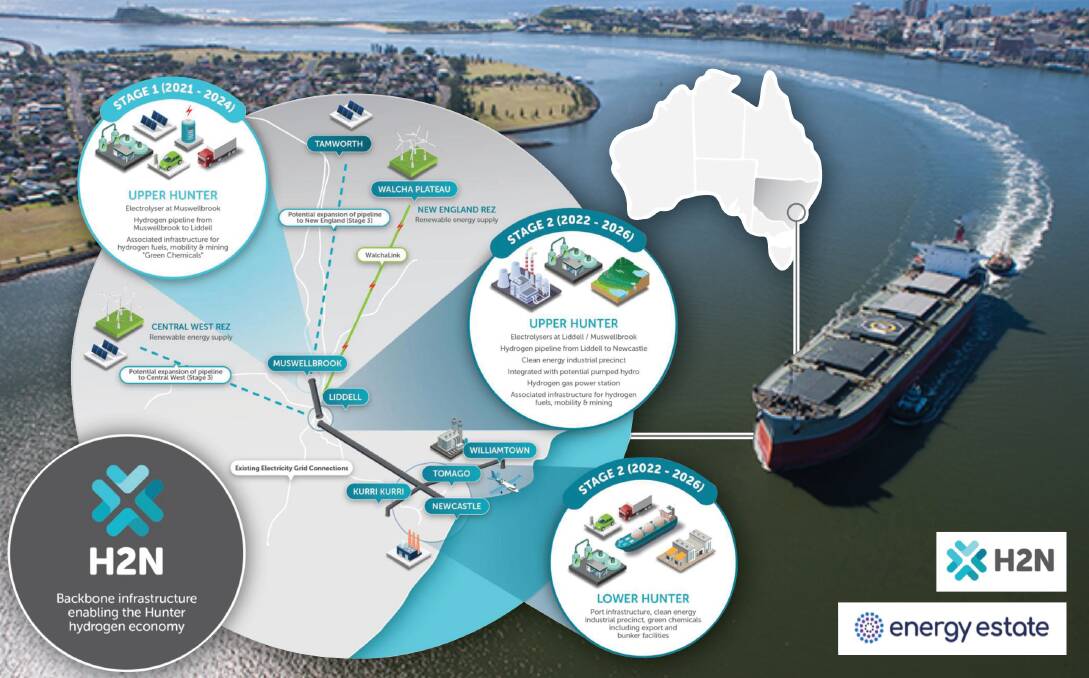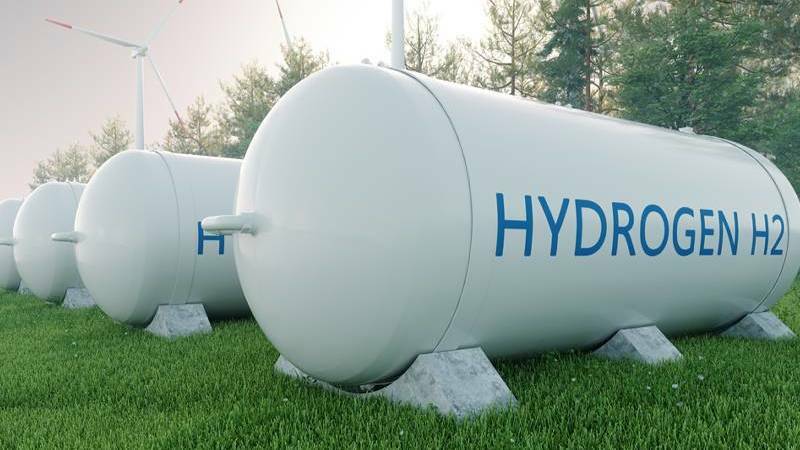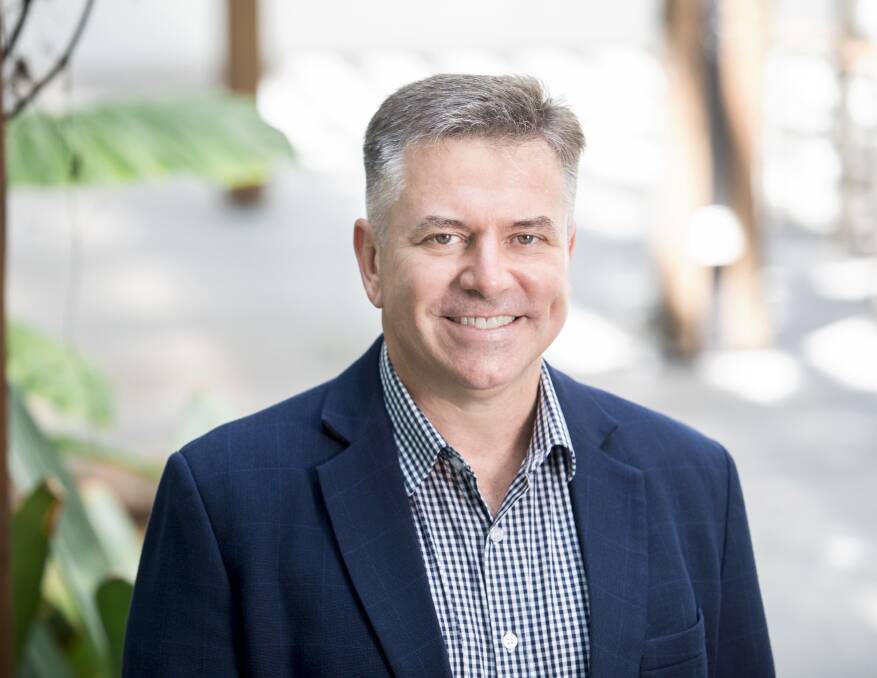
Key Hunter industry groups have joined AGL to support a proposal to transform the Hunter Region into a $2 billion 'hydrogen valley'.
Subscribe now for unlimited access.
or signup to continue reading
The Hunter Hydrogen Network (H2N) project - a large-scale hydrogen production, transportation and export project - seeks to enable the development of the hydrogen economy in the Hunter Valley in partnership with hydrogen users and exporters.
The project devised by advisory firm and business accelerator Energy Estate has emerged as debate about the Hunter's energy transition takes centre stage in the Upper Hunter byelection.
The project's supporters include AGL Energy, pipeline operator APA Group, global energy producer Idemitsu and commodities trader Trafigura and large-scale renewable energy developers RES Australia and WalchaEnergy.
An AGL spokeswoman said the company supported the pre-feasibility study to determine the project's viability.
"AGL is committed to exploring investment opportunities in the Hunter that build on the region's legacy of providing energy for the national energy market. AGL is currently developing plans for an Energy Hub at Liddell which will include solar storage systems, grid-scale batteries and a waste to energy facility," she said.
"AGL believes Australia's future energy needs will be delivered through a combination of technologies - gas, hydrogen, pumped-hydro, renewables, firming technologies and industrial developments - all of which will play a role in the energy transition."
The Hunter's suitability for hydrogen technology is well documented.
READ MORE:

The government will invest $275.5 million to accelerate the development of four additional clean hydrogen hubs in regional Australia and implement a clean hydrogen certification scheme.
The hubs will build-up opportunities for domestic use of hydrogen while creating job and investment opportunities for regional centres.
The Hunter Valley, Bell Bay (Tasmania), Pilbara (Western Australia), Gladstone (Queensland), La Trobe Valley (Victoria), Eyre Peninsula (Whyalla, South Australia) and Darwin have been identified as possible locations.
Hunter Hydrogen Cluster (NEW H2) chair Boris Novak said the hydrogen network plan highlighted the confidence that major investors had in the Hunter Region's ability to adapt to a rapidly changing energy landscape.

"I think this plan reinforces what we have been arguing - the Hunter is a good place for establishing long term and sustainable jobs and positioning us to achieve zero emissions targets," he said.
Energy Estate is working with Beyond Zero Emissions on creating renewable energy industrial precincts in the Hunter.
The Hunter Hydrogen Network would also leverage local skills and resources, with the aim of bringing new domestic manufacturing opportunities to the region.
"H2N's ambition is to enable Australia's first hydrogen valley in the NSW Hunter, transforming the region into a global superpower of renewable energy supply", Energy Estate Principal Vincent Dwyer said.
"A hydrogen economy and thriving supply chain in the Hunter has the potential to support local industry and workers into the jobs of the future and positions the Hunter in the race to be one of Australia's leading renewable energy exporters."
The organisations are engaging with Energy Estate to conduct further due diligence and assess the scope and concept of the project.
The first stage of the Hunter Hydrogen Network project aims to produce green hydrogen and associated green feedstock for mining, vehicles and other industrial uses in the Upper Hunter.
The second phase of the project will assess the transportation of hydrogen through a dedicated hydrogen pipeline to Newcastle, supplying future local users and exporters, including producers of green ammonia for export, green feedstock into the chemical sector, green fuels and hydrogen turbines to provide green dispatchable energy solutions.
IN NEWS TODAY:
Energy Estate Principal Simon Currie said creating a local supply chain will help Australia become a competitive producer of green hydrogen for domestic and export markets.
"The project will be critical in enabling new long-term, sustainable jobs and will underpin the clean industrial precincts across the region," Mr Currie said.
The H2N project is being developed under Energy Estate's HydrogenGrowth platform, which focusses on developing green hydrogen opportunities in Australia and abroad.
It builds on Energy Estate's existing projects in the region, including the Walcha Energy Project, which proposes to connect directly to the Hunter through WalchaLink.
H2N will also facilitate Idemitsu's Muswellbrook energy, training and industry precinct, which will repurpose an existing coal mine at Bells Mountain and establish a clean industrial hub incorporating pumped hydro, solar, battery storage, green hydrogen production, training facilities and a new manufacturing precinct.
It also has the potential to unlock the energy resources of the Central West, New England and Hunter-Central Coast renewable energy zones.
Our journalists work hard to provide local, up-to-date news to the community. This is how you can continue to access our trusted content:
- Bookmark: newcastleherald.com.au
- Download our app
- Make sure you are signed up for our breaking and regular headlines newsletters
- Follow us on Twitter
- Follow us on Instagram
- Follow us on Google News


